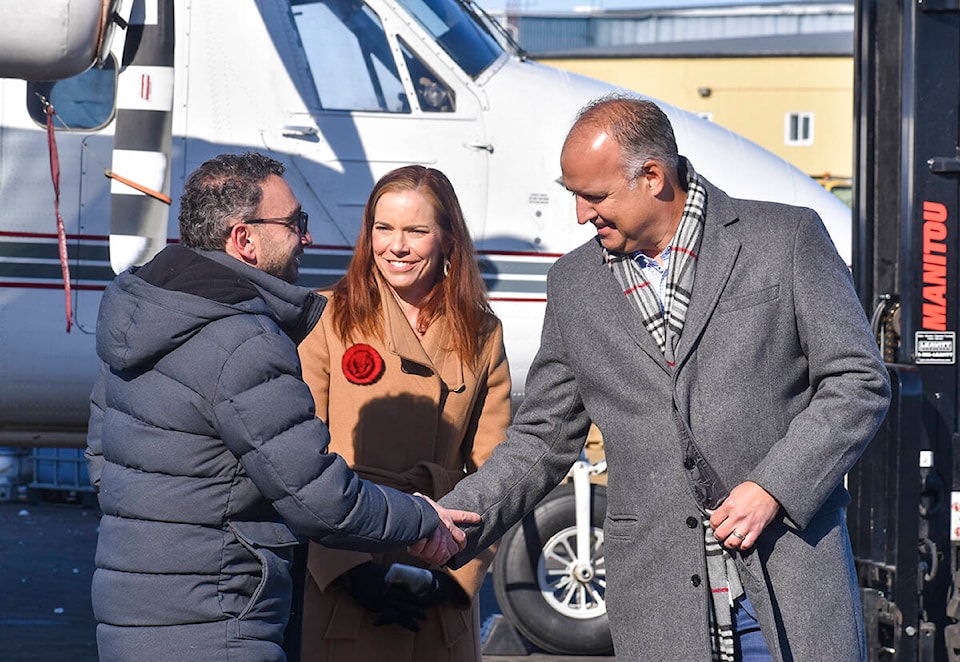The mineral extraction industry across the country, including in the NWT, is getting a major new funding boost from the federal government.
In its 2022 budget, unveiled on April 7, the federal government proposed up to $3.8 billion over eight years as part of an inaugural Critical Minerals Strategy.
Speaking to the media on the runway of Det’on Cho Logistics on Wednesday morning, federal Transport Minister Omar Alghabra said the Critical Minerals Strategy aims to strengthen supply chains, create new jobs and promote the use of zero-emission vehicles.
“We are all witnessing the effect of the global pandemic on global supply chain challenges and global inflation,” he said. “But the measures in this budget are clearly meant to address these challenges, to ease pressure on our economy, to expand our capacity to make life more affordable for Canadians and to create more jobs.”
These measures include $1.5 billion for new critical minerals projects, another $1.5 billion for projects in “critical regions” like Ontario’s Ring of Fire, $80 million for geoscience and exploration programs and $144 million for research and development.
However, some of the territory’s most important minerals and metals aren’t directly targeted by these new investments. The federal government has its own list of 31 minerals it considers “critical for the sustainable economic success of Canada and our allies,” which doesn’t include diamonds or gold.
Although this decade will see the closure of most, if not all, diamond mines in the territory, diamonds remain an important driver of the NWT economy: The territory extracted more than $1.5 billion worth of the gems in 2021, according to the NWT Bureau of Statistics. And while gold hasn’t been a significant contributor to the NWT economy since 2004, according to the same data set, recent promising exploration projects and the rising price of gold mean that the precious metal may be set to make a comeback in the territory.
Speaking at the April 20 Det’on Cho briefing, Caroline Wawzonek, the NWT’s minister of Industry, Tourism and Investment, praised the new federal investments, saying they “reflect the discussions that the Government of the Northwest Territories has already been having with the federal government around both our strong potential in this sector, as well as some of the challenges we face around regulatory processes and infrastructure gaps.”
To address these regulatory challenges, the 2022 federal budget includes $40 million to review existing regulations for critical minerals projects across the North.
“The Northwest Territories is one of our richest regions in the country that has natural resources that will be essential for us to address climate change, to produce new technologies, to produce batteries, to build new vehicles,” said Alghabra. “And that’s why I’m here today making the announcement, because I know it’s going to help this region and it’s going to help the country.”
*
